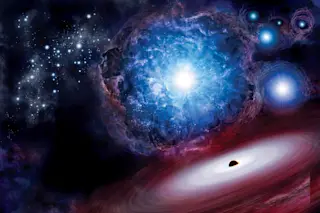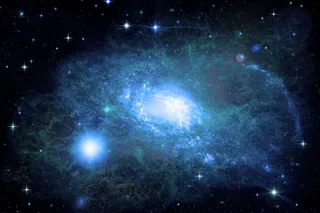In the year 1006, our ancestors witnessed the biggest natural light show in recorded history. A new “guest star,” as Chinese astronomers called it, appeared one night without warning. It was brighter than a crescent moon and visible in daytime. As months passed, the star dimmed until it was no longer visible over a year later.
Today, we know the guest star of 1006 was a supernova. The most violent explosions known, supernovas can briefly outshine the rest of a galaxy. The most common ones happen when a massive star starts to run out of fuel. Running on fumes, it can’t keep up enough internal pressure to balance out the intense gravitational forces of its tremendous mass. As a result, its core collapses into a neutron star or a black hole, taking most of the star out with it.
Supernovas are rare; less than 1 percent of all stars are ...















